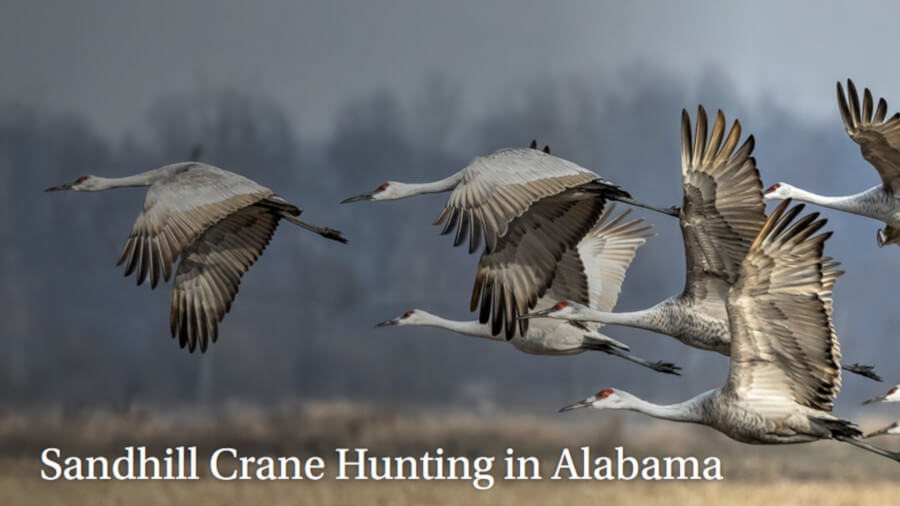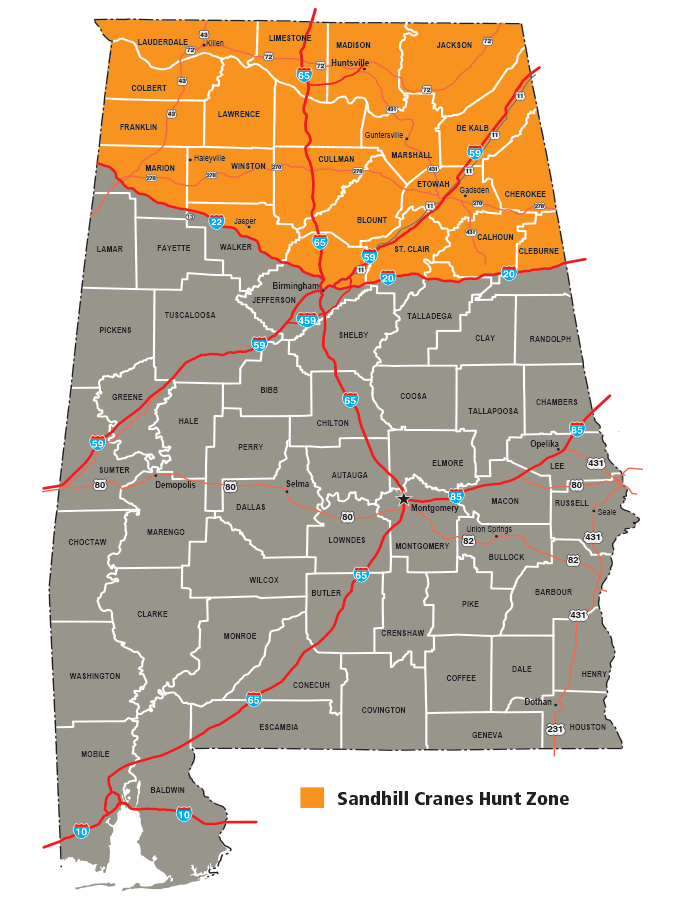
In an experimental hunting season, select Alabama hunters will be allowed to hunt sandhill cranes. Once on the verge of extinction, sandhill populations have rebounded in recent years with some states and provinces allowing hunting since the ’70s.
Alabama joins Kentucky and Tennessee as the third U.S. state to allow sandhill crane hunting. Other sandhill populations in states like Florida and Mississipi remain protected due to their small numbers.
The sandhill crane has been a protected species starting around 1900 under a handful of acts and treaties, and later in 1916 and 1918 under the Migratory Bird Treaty Act signed by the U.S. and the U.K. representing Canada.
Today the sandhill population in Alabama exceeds 15,000 birds according to Alabama Wildlife and Freshwater Fisheries Division, or WFF, estimates. The WFF conducts aerial surveys in the spring and fall to track wildlife populations.
“The sandhill subspecies found in the eastern U.S. is called the giant sandhill crane. Sandhills prefer wetland habitat with emergent vegetation and often feed in harvested grain fields,” said the WFF. “The sandhill crane hunt zone is restricted to north Alabama. Additionally, both state and federal wildlife refuges are closed to sandhill crane and waterfowl hunting.”
Alabama will issue 400 tags at random to hunters who qualify in an October drawing. Registration begins on September 4th.
Hunters must first pass an online test to assess their species identification skills and knowledge of hunting laws and regulations. In addition, hunters must be residents 16 or older or hold Alabama lifetime hunting permits.
SEE ALSO: Ruger’s Newest Rifle: The Hawkeye Long-Range Hunter Reviewed
“Once they pass that test, we will issue the permit and tags” said WFF game bird coordinator Seth Maddox to NPR. “Then they must purchase a federal duck stamp and HIP (Harvest Information Program) license, and if hunting on a WMA (wildlife management area), a WMA license. Once they have all that, they are good to hunt.”
Each tag allows hunters to take up to three cranes this season. The WFF will conduct three experimental hunting seasons through 2022 to gauge their effect on the crane population.
“For the experimental season, we elected to keep the harvest below 10 percent because we wanted to take it slow and ensure hunting will not be detrimental to the population,” said Maddox.
These cranes are one of two new animals the WFF has added to their hunting roster recently, the other being alligator.
Sandhill cranes are large birds that grow 3 to 5 feet tall, typically have 7-foot wingspans and they reproduce slowly. Unlike many migratory birds, sandhill cranes don’t breed in their first year.
The cranes typically start mating after reaching two to seven years of age. Mating pairs only raise one brood a year, and sometimes only one chick survives.


